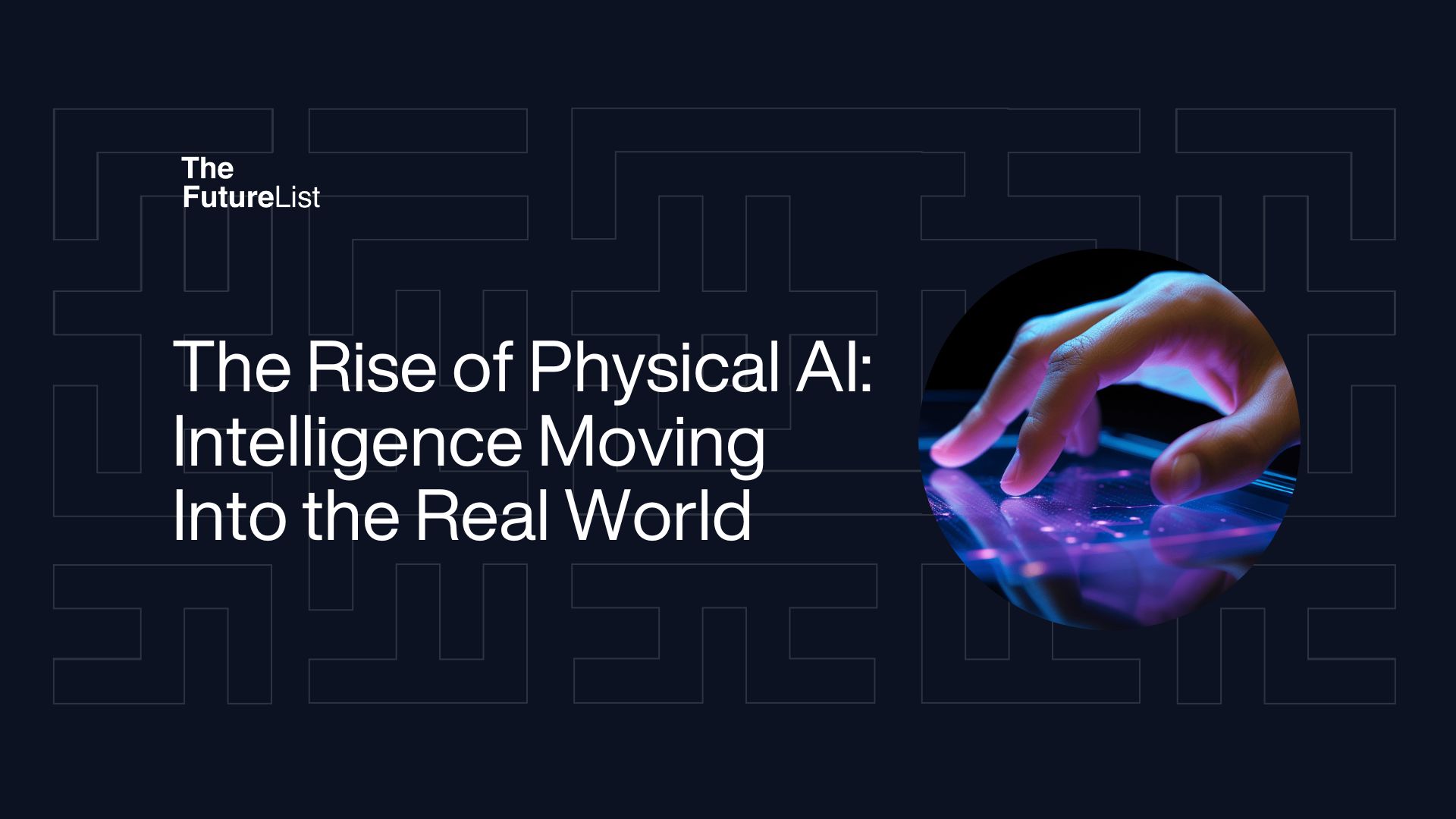
The Rise of Physical AI: Intelligence Moving Into the Real World
By Henry Duah
In the next great technological renaissance, intelligence won’t just reside in the cloud or behind a screen: it will walk, work and evolve right beside us. Welcome to the era of Physical Artificial Intelligence (Physical AI), where machine cognition escapes the bounds of code and server racks to inhabit robots that see, sense, build, and heal in the real world. Think less “sci-fi fantasy,” more “next frontier of industry and innovation.” As the line between software and machinery dissolves, a new class of intelligent systems is emerging to transform how we live, work and shape the physical world around us.
What is Physical AI?
Physical AI is the integration of advanced artificial intelligence with machines and devices that sense, move and interact directly with the physical world. Unlike traditional AI, which resides in code and data centres, Physical AI endows robots, drones, vehicles, and even home appliances with cognitive capabilities. These capabilities enable them to perceive their surroundings, make split-second decisions and physically impact their environments. Overall, these systems integrate machine learning, robotics, computer vision, and sensor technology, enabling them to perceive, reason, and act like living beings.
Physical AI vs. Traditional AI
Traditional AI primarily exists in the digital realm, where algorithms, data processing and decision-making occur inside software environments such as cloud servers or data centres. Its power lies in analysing data and generating insights, but it lacks direct interaction with the physical environment.
Physical AI, however, embeds intelligence within machines and devices that actively perceive, interpret, and manipulate the physical world around them.
What Are Experts Saying?
Industry leaders and technologists agree: Physical AI is emerging as the next frontier in AI and robotics. At the 2025 Consumer Electronics Show, NVIDIA’s CEO called it “the next big thing for AI,” emphasising how it brings productive, real-world interactions into machines’ capabilities. Experts highlight that Physical AI does what traditional robots cannot: adapting in real time, learning from experience, and handling unpredictable scenarios with much greater flexibility. Thought leaders predict Physical AI will soon be as integral to factories, farms and hospitals as the internet is to our daily lives.
Technological Foundations Driving Physical AI’s Leap Forward
The rapid growth and deployment of Physical AI hinge on advances in several key technologies working in concert, such as:
- Machine Learning & AI Algorithm
Sophisticated models now enable perception, pattern recognition, contextual understanding, and adaptive control systems essential for physical interaction under uncertainty.
- Edge Computing
Processing data locally on devices or near the source reduces latency, lowers bandwidth requirements, and enhances reliability, which is crucial for real-time decision-making in autonomous drones or robots.
- Sensor Technologies
Advances in cameras, LiDAR, radar, tactile sensors, and environmental monitors furnish Physical AI systems with rich, multimodal data streams to understand their surroundings deeply and accurately.
- Connectivity (5G/6G)
Ultra-fast, low-latency communication networks enable seamless coordination between distributed Physical AI systems, cloud platforms, and human operators – facilitating remote monitoring, fleet coordination, and data sharing.
- Robust Hardware Platforms
Innovations in lightweight materials, low-power electronics and energy harvesting (e.g., solar power) allow deployment in remote or harsh environments without compromising autonomy or durability.
- Human-Machine Interfaces (HMI)
Additionally, advancements in haptics, augmented/virtual reality, and intuitive controls enable safer and more natural collaboration between physical AI entities and human users.
The Takeaway
Physical AI represents a profound extension of artificial intelligence, moving beyond virtual cognition into embodied intelligence that senses, learns and acts in the physical world. This fusion empowers machines with new autonomy, agility, and usefulness across healthcare, transportation, agriculture, and more, fulfilling promises of efficiency, safety, and enhanced human well-being. The convergence of breakthroughs in AI algorithms, sensors, edge computing and connectivity is propelling Physical AI from concept to critical infrastructure, reshaping both industries and our daily lives.
We will continue to track developments in Physical AI and share them with you.
Get innovation insights from The FutureList weekly. Subscribe to our newsletter here
Categories
- Agritech
- Artificial Intelligence
- Biotech
- Blockchain
- Climate Tech
- Data Infrastructure
- Edtech
- Events
- Fashion
- Fintech
- Healthtech
- Infrastructure
- Innovation Memos
- Innovation Scout Program
- Insight
- Insurtech
- Machine Learning
- Martech
- Mobility
- Music and Media
- Partner Offers
- Perks
- Procurement
- Proptech
- Retailtech
- Ridehailing
- Ridesharing
- Robotics
- Space Aviation
- Supply Chain
- Talent
- Telecoms
- Uncategorized
- Venture Capital
- Wastetech
- Women In Tech
Recent Posts
- The Rise of Physical AI: Intelligence Moving Into the Real World
- Shaping the Future of Medicine: How Tiny Devices Are Revolutionising Vital Body Functions
- The Rural Health Operating System: Reinventing Access to Care in Africa
- Intelligent Grid Monitoring: How IoT and AI Are Powering the Future of Energy
- Innovation Memo with STEMAIDE: Hands-on STEM Education for Young Africans